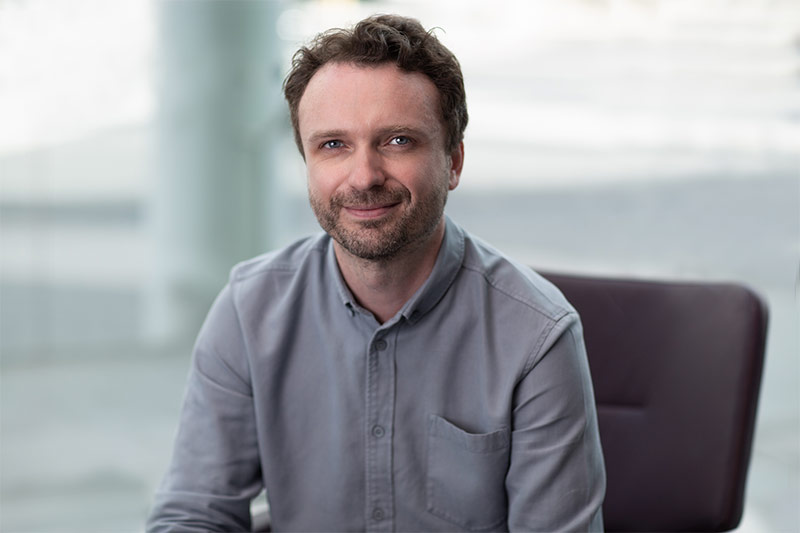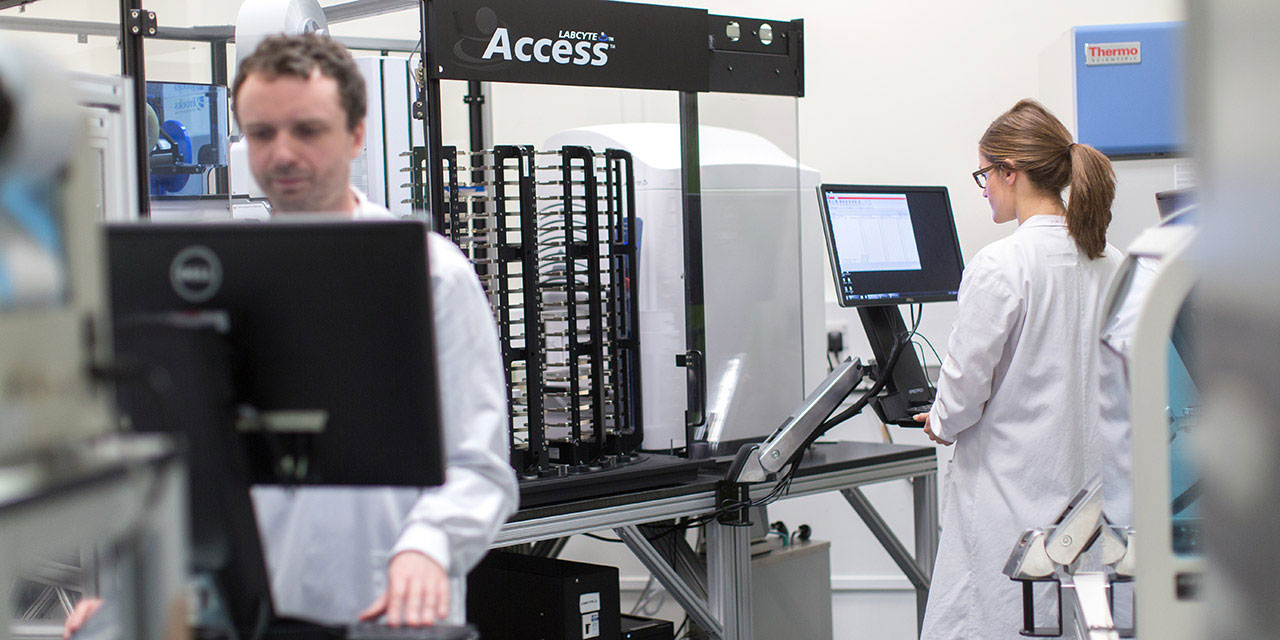Dr. David McClymont
Head of Automation, London DNA Foundry

Factories of the future will be using the very building blocks of life to create the scaffolds and foundations of miniscule genetic constructs that support large-scale, high-value chemical, biological, and pharmaceutical manufacturing. Like their industrial predecessors, the success of such operations will be based on automation.
At the London DNA Foundry, affiliated with Imperial College London and SynbiCITE, the UK Innovation and Knowledge Centre for synthetic biology, the future is now — and Labcyte Echo liquid handling and its automated Access system are integral parts of the synthetic biology construction center.
“Fields such as synthetic biology and metabolic engineering increasingly use standardized building blocks of DNA parts,” said David McClymont, head of automation at the London DNA Foundry. “Biofoundries have hugely increased the scale and scope with which DNA constructs can be built, and at their heart are automation tools like the Labcyte Echo.”
DNA can be transformed in many ways; it can be cut up, stuck together, copied, mutated, and then transferred to organisms via microbes like E.Coli or yeast. The resulting DNA construct can then be screened and sub-cultured in liquid growth culture.
The process involves large numbers of liquid transfers, and due to the large number of part combinations even within one well, the number of transfers can really pile up, McClymont says. Not having to deal with pipette tips is important, reducing the risk of some of the materials evaporating away in the time it would take to swap them out, he adds.
“The ability of the Echo 525 and 550 to work with much smaller volumes sizes is also important, and a big help in reducing enzyme costs while stretching the amount of use we get from our DNA parts library,” McClymont says.
McClymont was no stranger to Labcyte systems, having used them previously as head engineer at the Chemical Biology Platform in Oslo, Norway, where he put them to traditional use working with chemicals in compound libraries, high throughput screening and assay development. At the Foundry, he is using his two Echo systems to combine and transfer DNA parts instead of compounds.

Image courtesy of London DNA Foundry
The Echo instruments and their integrated robotic Access automation system are part of a larger system that includes experimental design and analysis software JMP to design experiments, and a bespoke software system called AMOS, which interfaces with the robots and readies retrieved data for analysis and modelling.
Users of the DNA Foundry, which include researchers in both academia and industry, benefit not only from access to this cutting-edge equipment, but also from a highly experienced staff of high-throughput laboratory experts, molecular biologists, and software developers who are able to offer customized solutions to an array of experimental needs.
Scaling up new biotechnology applications, in particular, can come with unique challenges, McClymont says. One such challenge — creating a methodology to abstract and automate the construction of yeast-compatible designs — was recently summarized in this paper. But it has definitely been worthwhile, he says.
PRESENTATION VIDEO
Dr. David McClymont, Head of Automation at The London DNA Foundry discusses the impact of non-contact, acoustic liquid handling in his synthetic biology research.